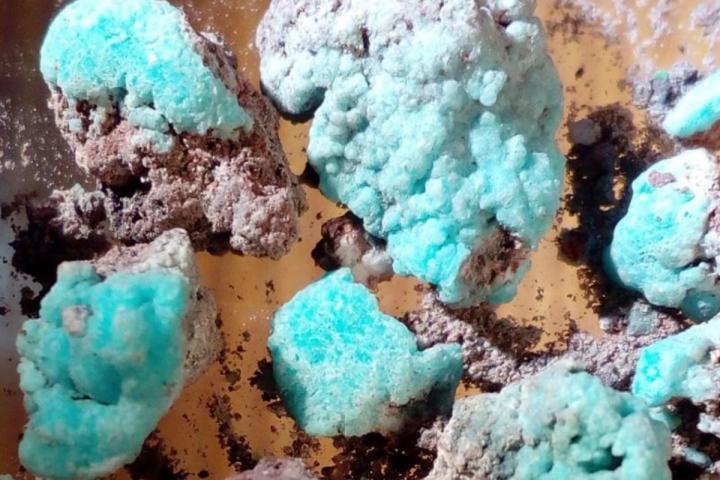Scientists at St Petersburg University have found a new mineral called ‘Petrovite’. The mineral could be used in next-generation rechargeable batteries.
Have you ever thought that a bright blue crystal could someday provide energy? Well, in a remarkable discovery, scientists at St Petersburg University have found a mineral that can actually power the batteries of the world. Yes! you read that right. A team of researchers has found a new entry into the world of minerals: Petrovite.
Minerals are often used to create renewable energy but that space still needs a lot more research. But to everyone’s surprise, scientists have now discovered a naturally occurring mineral that could power the batteries. This recent study suggests that a beautiful blue mineral named ‘Petrovite’ (Na10CaCu2(SO4)8) is the potential source for ionic conductivity and can be used as a cathode material for sodium-ion batteries.
Petrovite not only inspires advancements in next-generation batteries but is also extremely beautiful to look at. Petrovite is a shiny blue globular mineral of tabular crystals that can capture anybody’s attention with its beauty.
Where is Petrovite found?
The mineral Petrovite was found inside the Tolbachik Volcano. The mineral formed majorly after two volcanic eruptions that occurred in the 1970s and 2010s. According to the scientists in the research team, “The Kamchatka Peninsula of Russia is a unique territory because of its mineralogical diversity.” In recent years, researchers have discovered dozens of new minerals in the area, and many of the minerals found are one-of-a-kind in the world.
Petrovite was born in a fiery place in the wild, but researchers could look into synthesising a compound with its same structure in a lab for using them in battery development in near future. This could be quite a journey for Petrovite: From a volcano to powering gadgets in people’s homes.
How can Petrovite be used?
Crystallographer (crystal specialist) Stanislav Filatov is the project manager in the study. He believes that the mineral Petrovite has promising results and holds the potential for ionic conductivity and can be used as a cathode material for sodium-ion batteries.
Professor Stanislav Filatov also said, “The copper atom in the crystal structure of Petrovite has an unusual and very rare coordination of seven oxygen atoms.”
Petrovite is particularly interesting because of its composition and structure with which it is formed. The mineral consists of oxygen atoms, sodium sulphur, and copper, which form a porous framework, and also the voids in the mineral are connected to each other by channels through which relatively small sodium atoms can move. This structure of Petrovite therefore can be a promising structure for ionic conductivity and cathode material in sodium-ion batteries.
Also, using Petrovite in sodium-ion batteries can be extremely useful as they will form a type of rechargeable battery that could become an affordable alternative to lithium-ion batteries which are commonly used.
Petrovite has a problem with its structure
According to researcher Filatov, there is just one problem with the structure of this blue mineral. A small amount of a transition metal – copper is present in the crystal structure of the mineral. But he even gave a solution to this problem and said that this problem could be solved if minerals will be synthesised by a compound with the same structure as Petrovite in the laboratory.
There is obviously a lot more research that needs to be carried out before this discovery translates into a solid plan of creating a sodium-ion battery, and a solution to our energy storage distress. But we should agree on the fact that this discovery by scientists has uncovered a pretty new mineral to look at in the meantime.

